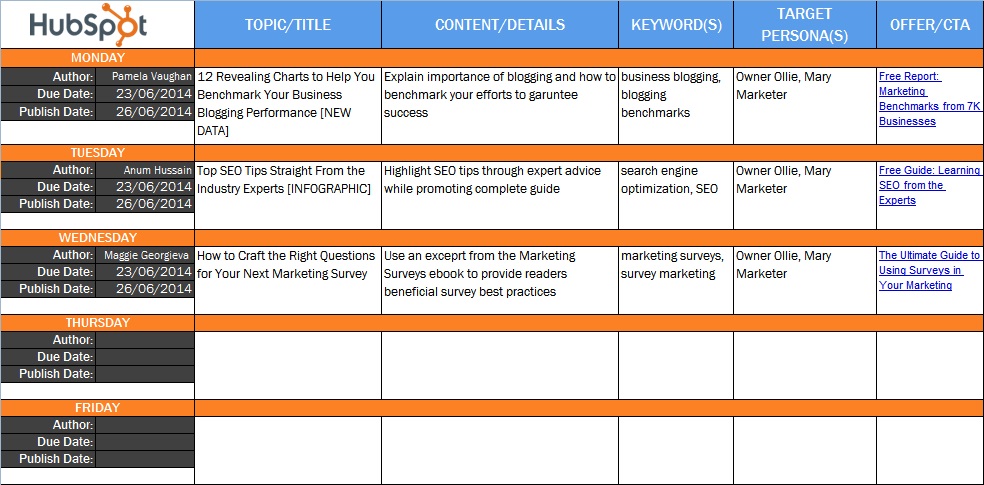Written by Simon Geraghty.
The value of a Content Calendar for your online marketing
You understand that creating content and blogging is critical for attracting visitors, leads and building SEO for your website. Your business is using social media, generating a variety of original content that is relevant to your audience. But you’re struggling with time and planning. This is where developing and maintaining a content calendar comes in.
The main benefit of a content calendar, or editorial calendar if you are really motoring, is to keep you on track and also avoid the dreaded ‘what will I write about this week’ scenario!
How does a Content Calendar for my marketing help?
Coming up with ideas for content and writing blogs and creating content is in itself time consuming. By developing a content calendar you are able to reduce a lot of the stress that comes from figuring out what content you should develop next. You are also creating an action plan for yourself or your team.
An editorial calendar helps you balance short term goals and long term objectives. If you’re managing your blogging in-house a content calendar allows everyone to see what’s in production and what has gone out already. Your calendar can also be used to revisit evergreen content. This is content that isn’t time specific and has a long shelf life, there’s more on this below.
A Content Calendar will help:
- Focus on needs and provide value to your audience
- Foster idea generation and innovation
- Refine key words and develop themes by week/ month
- Create alignment for all marketing activity
- Plan & integrate evergreen content (blogs, articles, case studies, videos, ads, infographics, whitepapers, research results)
- Balance content types (as above)
- Organise authors and topics
- Resource and workflow management
- Ensure that content is developed on time
- Brief content new contributors on what has gone before and what is needed in future.
Editorial Calendars in larger organisations
Where content is a big driver of the business (such as for a magazine, cultural, tourism, technology or events companies) producing good, and relevant content becomes more pressing. For these larger scale content marketing efforts, the content calendar also aids in the management of multiple contributors and for multiple formats (journalists, designers, videographers, and so forth).
Here it is vital that any calendar developed, by an internal team or external agencies, is aligned with your overall sales and marketing activity such as:
- Above the line campaigns (do these still happen? Only joking of course)
- Events
- PR activity
- Mail shots/ newsletters
This becomes relevant whether you have outsourced your content marketing or where sales and marketing functions sit in different teams in the organisation.
Make sure your Content Calendar is tracking:
- Your keywords
- Calls to action
- Content categories & themes
- Content format/ type (blogs, infographics, videos, slides, etc.)
- Channels used
- All related activity happening offline.
- Metrics and outcomes
What format should it take?
The form your content plan takes can be as straight-forward as a spreadsheet or a Word / Google doc. The team over at Hubspot have a free Excel blog editorial template. You just sign up top their mailing list and give them some detail about yourself and your business, but not too much, and then download the template!
Their calendar covers the following 8 areas:
- Author
- Due date
- Publish date
- Topic/ title
- Top level Details
- Keywords
- Personas/ Audience
- Offer & call to action (CTA)
Form versus function
Your content calendar should keep your organisation focused on what’s happening now and also planning ahead and avoiding the panic on Monday of what you are going to create that week. For larger operations the calendar will aid teamwork and help to streamline resources.
The plan should not resemble edicts written on stone, or even electronic, tablets come down from the mountain. Your content calendar shouldn’t be restrictive, it can change, depending on market circumstances and the reaction of your audience. What is the audience responding to? Has a key channel become more visual, or is now presenting video in a better format?
It is important that you allow room for flexibility and modifications. The Calendar needs to be able to react to opportunities that present themselves – an award won, a key endorsement, or winning new business, or receiving an injection of funding.
If your business or organisation is looking for help with its blogging and content generation why not mail us at [email protected] to find out how we can help?

